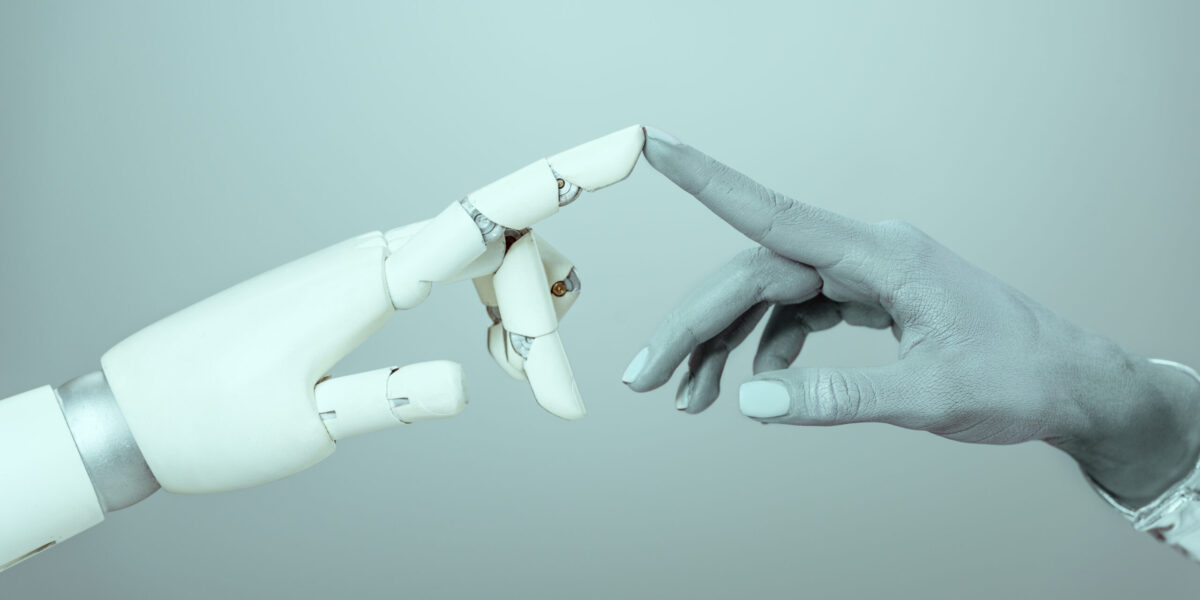Researchers at Japan's Shinshu University have developed a cost-effective piezoelectric composite material made of electrospun PVDF nanofibers and dopamine. Sensors made from this are more flexible, stronger and more stable than traditional sensors. They promise further advances in monitoring people and robots.

Flexible and robust sensors are becoming increasingly important for people and robots.
Photo: Panther Media/Andrew Lozovi
The world is rapidly moving towards an era of increasing automation and connectivity using technologies such as artificial intelligence and robotics. Sensors are a central interface between people, machines, and the environment.
However, traditional silicon sensors are reaching their limits as robots become increasingly mobile. The same applies to requirements for portable electronic devices, which are integrated into wearable devices, for example. Therefore, more comfortable, more versatile and more sensitive flexible sensors have become the focus of research. Piezoelectric sensors, which convert mechanical voltages into electrical signals, play an important role here.
Electrospinning as a key to robust sensors
A team of researchers from Shinshu University in Japan took on the challenge of improving the design of flexible piezoelectric sensors using electrospinning. Their current study, published in Nature Communications, describes the step-by-step fabrication of a 2D nanofiber membrane.
First, the researchers wove a stable network of PVDF nanofibers (PVDF = polyvinylidene fluoride) with diameters of 200 nanometers (nm) as a sensing base. Ultrafine PVDF fibers with diameters of less than 35 nanometers are woven on top, which spontaneously interlock between the gaps in the underlying mesh and create a special 2D topology.
Improve crystal orientation and boost dopamine
Experiments, simulations, and analyzes showed that the resulting PVDF composite network has improved beta crystal orientation. This polar phase is responsible for the piezoelectric effect in PVDF, making the sensors significantly more robust.
To increase the stability of the composite network, the researchers additionally introduced dopamine (DA) during electrospinning, which forms a protective core structure. “Sensors made from PVDF/DA composite films demonstrated excellent performance, including a wide response range, high sensitivity to low-range weak forces, and excellent operational endurance,” notes study leader Ick Soo Kim.
Various applications in medicine and robotics
The researchers tested the properties and performance of the sensors practically using wearable devices to measure human movements and actions. The result: The sensors worn by people showed varying voltage responses to different natural movements and movement patterns. These included physical signals such as tapping the fingers, bending the knee and arm, stomping the foot, speaking, or pulsing on the wrist.
Because the newly developed composite material is cost-effective and environmentally friendly, the researchers believe it has the potential to mass produce environmentally friendly organic sensors. Application areas include health monitoring, diagnostics and robotics. According to Kim, nanofibers can be used in sensors to monitor human movements and in humanoid robots such as Optimus from Tesla. It can actually imitate human movements and walk like a human.
Outlook: Flexible sensors without external power supply
The research team is now working to improve the electrical properties of the material so that flexible electronic components can operate without an external power source. According to the researchers, further progress in this field could accelerate the path to the era of artificial intelligence and contribute to a comfortable and sustainable life.

“Total coffee aficionado. Travel buff. Music ninja. Bacon nerd. Beeraholic.”








More Stories
Coral Seeding: Artificial Insemination Makes Coral More Heat Tolerant
Fear, Anger, and Denial: How People Respond to Climate Change – Research
LKH Graz: Using radiation to combat heart arrhythmias